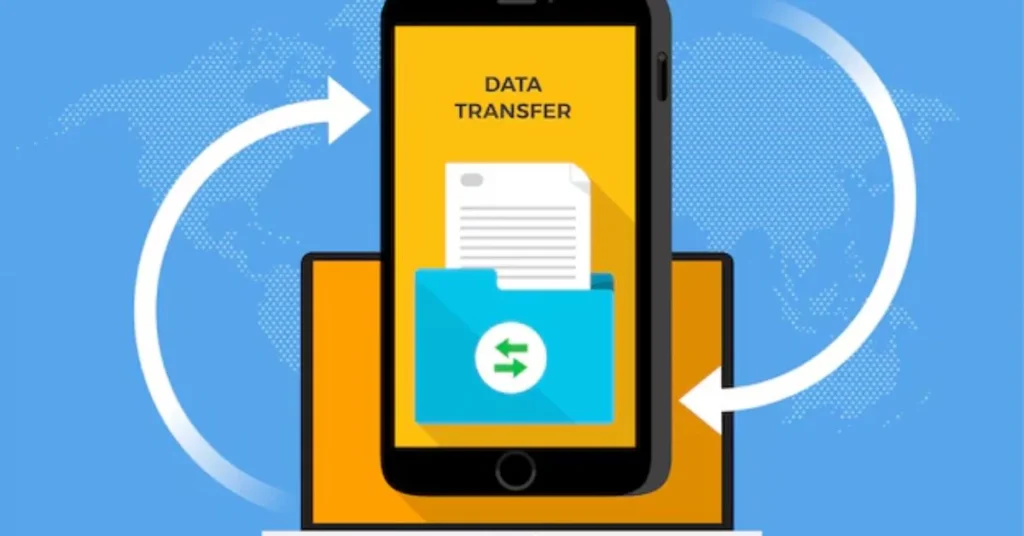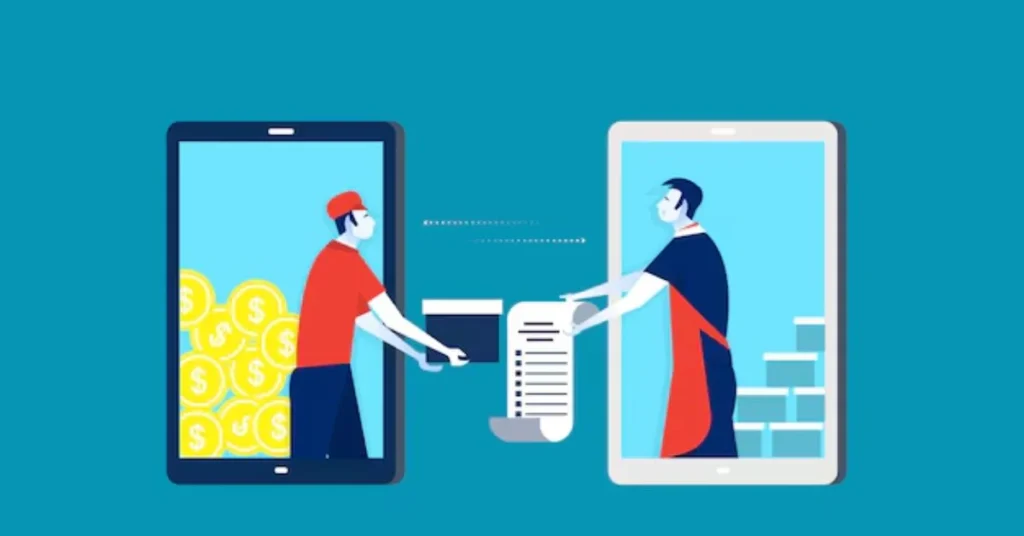In today’s fast-paced world, managing unIn the modern world of remote access and gaming, having a reliable application for seamless connectivity is vital. Among the many available tools, Parsec stands out for its exceptional remote access capabilities and low-latency streaming. But Can You Transfer Files Via Parsec App?
While Parsec excels in providing a smooth connection experience, its file transfer capabilities are not as straightforward. This comprehensive guide will explore everything you need to know about file sharing with Parsec, the best alternative solutions, and tips for seamless remote collaboration.
Understanding Parsec
What Is Parsec?
Parsec is a versatile remote access application widely used for gaming, productivity, and collaborative work. It allows users to connect to their devices remotely and stream content with minimal latency. This app is especially popular among gamers who use it for hosting multiplayer sessions.
Key features of Parsec include low-latency streaming, screen sharing, and a peer-to-peer connection setup. Unlike traditional remote desktop applications, Parsec focuses on delivering a high-quality streaming experience, making it an ideal choice for resource-intensive tasks such as gaming or video editing.
How Does Parsec Work?
At its core, Parsec uses advanced peer-to-peer streaming technology to provide a smooth and responsive user experience. It establishes a direct connection between the host and the client, which minimizes delays and ensures secure data transmission.
Parsec supports multiple platforms, including Windows, macOS, Linux, and Android, making it accessible to a wide range of users. By prioritizing low-latency performance, it ensures that users can remotely control their systems with precision, whether for professional tasks or recreational purposes.
File Transfer Functionality in Parsec
Does Parsec Support File Transfers?
One of the most frequently asked questions is whether Parsec supports file transfers. The answer is no—Parsec does not have a built-in file transfer feature. This limitation stems from its design focus on remote access and gaming rather than comprehensive remote desktop functionality.
However, this does not mean users are completely restricted. While Parsec lacks native file transfer capabilities, there are numerous ways to share files during a remote session, such as using third-party tools or cloud storage services.
Workarounds for File Transfers Using Parsec
Although direct file sharing is unavailable, users can adopt several effective methods to share files while connected via Parsec.
Using Cloud Storage
Cloud platforms such as Google Drive, Dropbox, and OneDrive enable users to upload files and share them instantly during Parsec sessions. These services are particularly convenient for transferring large files securely.
Setting Up Shared Folders
By creating shared folders on the host or client system, users can directly access files during a session. This method requires proper configuration of permissions to ensure security and accessibility.
Utilizing Third-Party Tools
File transfer applications such as FileZilla or WeTransfer can complement Parsec. These tools are easy to set up and allow users to send files without interrupting their Parsec connection.

Setting Up Alternative File Transfer Options with Parsec
Using Cloud Services
Cloud storage services are among the most efficient ways to transfer files alongside Parsec. They provide secure storage and allow for quick file access across devices.
Here’s how to use cloud services during a Parsec session:
- Upload Files: Log into your preferred cloud storage platform and upload the required files.
- Share Links: Generate a shareable link or grant access permissions to collaborators.
- Download Files: Access and download files on the remote system when needed.
These steps make it easy to manage file transfers, especially during collaborative projects or gaming sessions.
Setting Up Shared Network Folders
Shared network folders allow users to access files without relying on cloud storage. Setting up these folders involves:
- Creating a Shared Folder: On your host device, create a folder and enable sharing options.
- Configuring Permissions: Assign permissions to ensure only authorized users can access the folder.
- Accessing Files: During a Parsec session, access the shared folder directly from the remote system.
This method is particularly useful for teams working on large-scale projects that require frequent file exchanges.
Third-Party Tools for File Transfers
If cloud storage or shared folders are not viable, third-party tools like FileZilla or Teracopy can be effective alternatives. These applications support fast and reliable file transfers and can be used in parallel with Parsec for an uninterrupted workflow.
Pros and Cons of Using Parsec for File Transfer Needs
Advantages of Indirect File Transfers
Even though Parsec lacks native file sharing, it integrates well with external tools, offering several benefits:
- Flexibility: Users can choose from a variety of file-sharing methods based on their needs.
- Compatibility: Parsec works seamlessly with most third-party file transfer tools and cloud platforms.
- Convenience: Many indirect methods are straightforward and require minimal setup.
Limitations and Challenges
Despite its strengths, there are some drawbacks to using Parsec for file-sharing purposes:
- No Native Support: The absence of a built-in file transfer feature can complicate workflows.
- Extra Setup: Users must configure alternative tools, which may require additional time and effort.
- Potential Security Risks: Relying on third-party platforms for file sharing necessitates careful attention to privacy and security.
Security Considerations When Transferring Files via Parsec
Encryption and Privacy in Parsec
Parsec prioritizes user security by employing encryption for all remote connections. This ensures that sessions remain private and protected from unauthorized access. However, since file transfers rely on external solutions, it is essential to choose secure platforms and follow best practices to safeguard your data.

Best Practices for Secure File Transfers
When transferring files during a Parsec session, consider the following tips:
- Use password-protected links for cloud storage.
- Enable two-factor authentication for accounts.
- Regularly monitor shared folders to prevent unauthorized access.
Exploring Alternatives to Parsec for File Transfers
Remote Desktop Applications with Native File Sharing
If file transfers are a priority, consider using remote desktop applications with built-in sharing features. Examples include:
- TeamViewer: Offers secure file transfer alongside remote access.
- AnyDesk: Known for its fast and user-friendly interface.
- Windows Remote Desktop: A reliable choice for Windows users.
Dedicated File Transfer Applications
Dedicated file-sharing tools such as FileZilla or Teracopy can complement Parsec by simplifying the process of sending and receiving files. These applications are designed for efficiency and ease of use, making them ideal for frequent transfers.
For those seeking additional solutions beyond file-sharing or remote access tools, exploring financial flexibility options can be equally important. Understanding features like How to Borrow Money From Cash App can provide users with quick access to funds, enabling smoother workflows and project management.
Tips for Effective Remote Collaboration with Parsec
Optimizing Workflow with Parsec and File Transfer Tools
To ensure smooth collaboration:
- Pre-plan the tools and methods for file sharing before starting sessions.
- Test all setups in advance to address potential connectivity or compatibility issues.
- Use organized folder structures to streamline access during sessions.
Troubleshooting Common File Transfer Issues
If you encounter problems:
- Verify your internet connection and tool configurations.
- Check for updates in the applications being used.
- Restart the session or troubleshoot permissions to resolve access conflicts.
Conclusion: Can You Transfer Files Via Parsec App
So, Can You Transfer Files Via Parsec App? Although Parsec does not offer native file-sharing capabilities, various alternative solutions make it possible to transfer files efficiently during remote sessions. By integrating tools like cloud storage, shared folders, and dedicated file transfer applications, users can enhance their remote experience and collaborate seamlessly.
For organizations looking to streamline remote workflows and enhance collaboration, Parsec offers advanced solutions tailored to enterprise needs. With its focus on low-latency performance and secure connectivity, it is an excellent choice for businesses. Explore the enterprise solutions offered by Parsec to unlock a seamless remote access experience designed for professionals.
Call to Action
Try Parsec for your remote access needs today. Share your experiences and let us know how you’ve managed file transfers during your sessions!

FAQs About Can You Transfer Files Via Parsec App
Can you transfer files directly through Parsec?
No, Parsec does not support direct file transfers. Alternative methods like cloud storage are required.
How do I share files during a Parsec session?
Using tools such as Google Drive or shared network folders is the most effective approach.
Is it safe to transfer files using Parsec?
Yes, as long as secure practices like encryption and access controls are followed.
What are the best alternatives to Parsec for file transfers?
Applications like TeamViewer, AnyDesk, and FileZilla provide excellent file-sharing solutions.
Can Parsec add a native file transfer feature in the future?
While currently unavailable, future updates may include such functionality.










